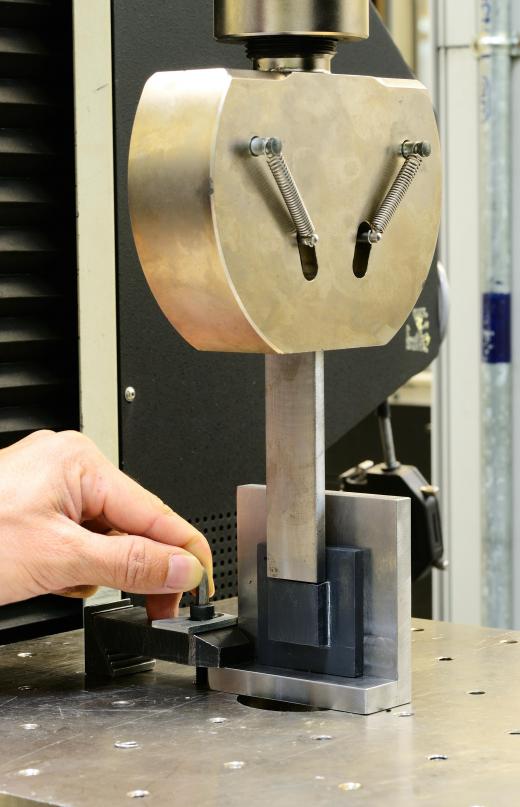What is a Universal Testing Machine?
A universal testing machine pulls, compresses, bends or stretches materials until they break. These tests determine the quality of the material as well as how suitable it is for a particular use. The universal testing machine is used primarily by laboratories that manufacture or mold various plastics.
One or two vertical columns are mounted on a base to form the body of the universal testing machine. A second horizontal plate, with attachments to hold the sample, slides up and down while performing stress tests on the samples. Machines with one vertical column are typically smaller and more affordable, though they often lack the ability to compress materials. Dual-vertical column machines are considerably more expensive but can handle larger samples in terms of both size and weight.

The most common test performed by a universal testing machine is a test of tensile strength. One end of a sample is held in place while the other end is pulled away until they two sides are torn apart. Flexural strength is tested in a similar fashion, but the machine pushes on one end of the sample instead of pulling on it. Again, the test stops when the sample breaks, though some materials are flexible enough that they will bend, rather than breaking, giving no final results.
Shear tests and compression tests are less common, though they are still used for a variety of materials. In a compression test, a sample is pressed between two plates until it breaks or loses its form. This test is often used to measure the strength of plastic foams and to find out how easily plastic bottles lose their shape. In the shear test, a metal blade is pushed into the sample at a constant rate until it shears off a piece of the sample. This test is measured in terms of force/area sheared.
In early versions of the universal testing machine, a specialized recorder was used to log test information, which needed to be interpreted by a specialist. Current models are managed by digital controls and computer software. These programs are sophisticated enough to run a test and display the results while the test is still going on. The advantage to this is that engineers can see how the stress affects the material up to and including the point at which it breaks. This information allows the engineers to determine how well a material will hold up under a variety of conditions.
AS FEATURED ON:
AS FEATURED ON:











Discuss this Article
Post your comments